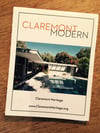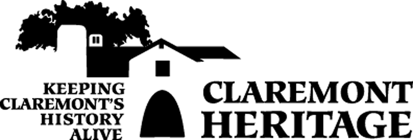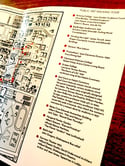Claremont Modern Map

Take a self guided tour of Claremont's significant Modern Architecture. Also included is a walking tour map of the Claremont Colleges significant public art including murals and sculpture.
Spurred by the post WWII economy and the GI Bill, suburbia was growing fast across the United States, and the influx returning GI’s created a demand for smaller, more affordable, housing. Claremont was no exception; architects and builders utilized new technologies and materials to create homes that defined a new Modern American domestic environment.
Another influence of the era was the Case Study housing project. Launched primarily in Southern California immediately after World War II by John Entenza, the editor of Arts and Architecture magazine, the project challenged leading architects of the day to create affordable, modern homes for the general public.
The idea was to demonstrate that small houses could incorporate excellent design at affordable prices by using innovative building materials such as metal and plywood, mass production methods, such as paneled exterior walls, and prefabricated elements, such as those that had been developed for the war effort.
The modern designs of the day included clean lines, influenced by the international style of architecture introduced by the Bauhaus, and lots of glass to bring the outdoors in (or to move the indoors out). Rooms with a minimum of walls, designed so that living areas flowed easily into each other and blended effortlessly promoted family and social interaction. The focal point was usually the fireplace, massive constructions of stone or brick, whose large chimneys were prominent features. Floor to ceiling glass with clerestory windows created visual horizons that opened the space to feel much larger than it actually was. Floors were of modern materials, such as cork, asphalt tile, vinyl linoleum, or terrazzo, while kitchen and bathroom countertops and cabinets were faced with the new seamless, waterproof wonder material, Formica.
Outside, flat or low-pitched gable or hip roofs or perhaps even butterfly (or inverted gable) roofs were used together in the same tract to create of feeling of individuality. The homes were often based on the same floor plan to conserve building costs and were sited to be oriented with walls of glass facing the backyard or garden to promote the new California leisure lifestyle that included swimming pools and BBQ’s.


